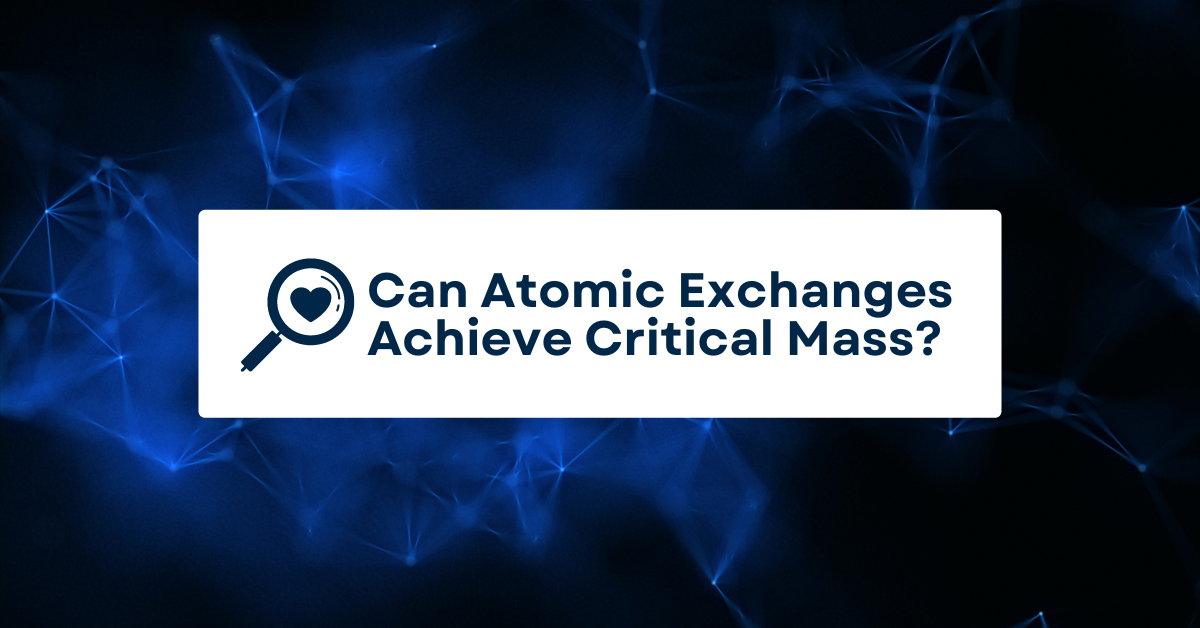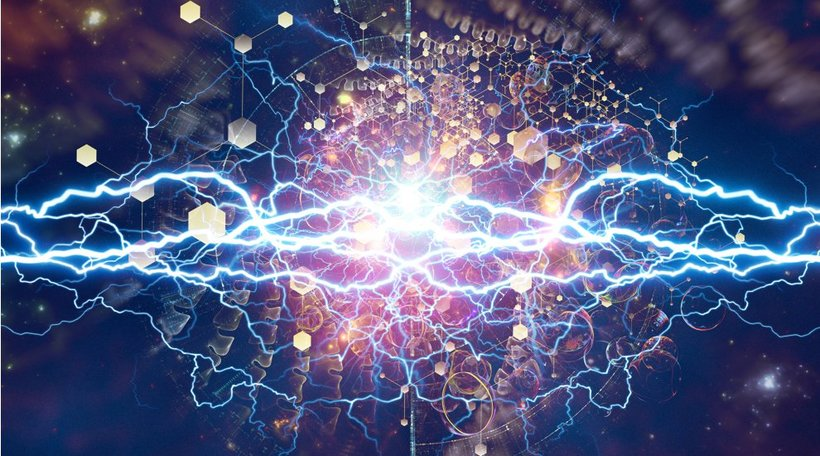Can atomic exchanges achieve critical mass? Read on to find out.
Atomic swaps are one of the most promising developments in decentralized technology: they enable peer-to-peer trade without the need for a third party.
These swaps depend on HTLCs, or Hash Time-Locked Contracts, which automatically execute or cancel a deal after a specific period. This ensures that neither party will breach the agreement.
Although the specifics are more complex, atomic swaps simplify crypto trading in several crucial aspects.
Unlike typical centralized exchanges, these swaps do not require a third-party custodian or rely on relayers, unlike other decentralized exchanges. Instead, the whole transaction is powered by cryptographic proofs.
This trading strategy is likewise light and unconstrained. Atomic exchanges do not need costly fees and are not susceptible to theft. Additionally, they resist regulatory pressure and seldom need KYC, but some DEXs take no risks.
Despite these benefits, atomic swaps have yet to achieve critical mass due to both technological and practical reasons.
READ ALSO: How To Identify And Avoid Online Gaming Scams
Table of Contents
Several Technical Concerns
Theoretically, atomic swaps should be less costly than centralized exchanges because they eliminate the need for intermediaries. However, minimal costs are not truly guaranteed.
On-chain transaction costs must still be paid during an atomic exchange and may be rather costly. Off-chain swaps may address this issue, but doing so requires overcoming other challenges.
Moreover, atomic substitutions are not always quick. Standard swaps are excessively sluggish for many trading situations: Bitcoin swaps may take over an hour to complete. This is a severe issue: crypto values may rush, causing one side of a deal to back out and terminate the transaction.
Lastly, compatibility is a concern. Atomic swap-traded cryptocurrencies must have the same hashing algorithm and be programmable.
Although an atomic swap exchange, such as Atomex, can exchange 95% of currencies, this is primarily due to the ubiquity of Ethereum’s ERC-20 standard and the fact that certain coins do not enable atomic swaps.
READ ALSO: Top Crypto Tips For YOU!
A Question Of Time?
Atomic swaps may be moving slowly since they are a relatively new technology. Despite being presented for the first time in 2013, the early swaps were manually coordinated on discussion boards.
For a very long period, atomic swaps suffered from a lack of visibility and accessibility. In 2017, Charlie Lee engaged in a Litecoin-to-Bitcoin trade, marking the beginning of more substantial exchanges. In the same year, HLTC-based payment channels on the Lightning Network gained popularity.
Increasingly automated systems have made atomic swaps accessible; however, coordination between users remains a challenge.
To conduct a swap, you must still locate a partner, which is not always doable. Moreover, atomic swaps are a secondary function on several exchanges. Consequently, they are not often very noticeable.
READ ALSO: Crypto Tips For Beginners: Why You Should Use An Exchange Instead Of A Wallet
Can Atomic Exchanges Achieve Critical Mass?
Absolutely! Atomic exchanges have the potential to achieve critical mass and revolutionize the world of digital transactions. But before diving into the details, let’s first understand nuclear exchanges.
Atomic exchanges, also known as nuclear swaps or atomic cross-chain trading, are a form of decentralized exchange where two parties can directly trade cryptocurrencies with each other without the need for intermediaries or centralized exchanges. This means users can now swap their digital assets securely and instantly.
Now, to answer the question, yes, atomic exchanges can achieve critical mass.
Here’s why:
Security: Atomic exchanges provide a high level of security. Traditional centralized exchanges are vulnerable to hacking and fraud, as they hold users’ funds in their wallets. Atomic exchanges eliminate this risk by allowing users to retain control of their private keys during the exchange process. This ensures that you have complete control over your assets at all times.
Privacy: With atomic exchanges, users can maintain their privacy because they don’t need to disclose personal information to a centralized exchange. This is a significant advantage for those who value their privacy and want to protect their identity while engaging in cryptocurrency transactions.
Decentralization: Atomic exchanges operate on decentralized blockchain networks, meaning no single point of failure or central authority controls the exchange. This decentralization ensures that the exchange cannot be shut down or manipulated by any external entity, making it more resistant to censorship.
Cost-effectiveness: Traditional centralized exchanges charge fees for every transaction, which can quickly add up, especially for frequent traders. Atomic exchanges eliminate or significantly reduce these fees, allowing users to save money on transaction costs.
Interoperability: One of the most exciting aspects of atomic exchanges is their ability to facilitate cross-chain transactions. This means that users can trade between different blockchains seamlessly. For example, you can swap your Bitcoin for Ethereum directly without an intermediary token like Tether. This interoperability opens up endless possibilities for users and expands the reach of cryptocurrencies.
However, it’s important to note that atomic exchanges are still relatively new and have not been widely adopted. Achieving critical mass will require education, awareness, and user adoption. As more people become aware of the benefits of atomic exchanges and utilize them, the network effect will take hold, resulting in increased liquidity and trading volume.
READ ALSO: How Far Have Facial Recognition Searches Come?
Which Atomic Exchange Projects Are Progressing?
Several ongoing initiatives are emphasizing atomic trade. Atomex utilizes an on-chain solution built on hashed timelock intelligent contracts to conduct transactions. It offers users the benefits of centralized and decentralized exchanges in one convenient package.
As a result, you can utilize a multicurrency HD wallet that features an integrated hybrid atomic swap exchange.
In conclusion, atomic exchanges have the potential to achieve critical mass due to their enhanced security, privacy, decentralization, cost-effectiveness, and interoperability.
While they are still in their early stages, the future looks promising for atomic swaps as more individuals and businesses recognize their value proposition in the digital economy.
INTERESTING POSTS
- How To Convert AVAX To BTC
- UK to launch Huawei cyber security review amid US trade tensions
- Blockchain: Orchid decentralized VPN will affect the www
- A Guide To DOG To BTC Exchange
- Cryptocurrency Payment: Pros And Cons
- Programs For Mining On Different Hardware [MUST READ]
- How To Cut Down Your Company’s Costs With Outsourced IT Support
- Day Trading Crypto For Beginners Using Trading Bots
About the Author:
Meet Angela Daniel, an esteemed cybersecurity expert and the Associate Editor at SecureBlitz. With a profound understanding of the digital security landscape, Angela is dedicated to sharing her wealth of knowledge with readers. Her insightful articles delve into the intricacies of cybersecurity, offering a beacon of understanding in the ever-evolving realm of online safety.
Angela's expertise is grounded in a passion for staying at the forefront of emerging threats and protective measures. Her commitment to empowering individuals and organizations with the tools and insights to safeguard their digital presence is unwavering.









